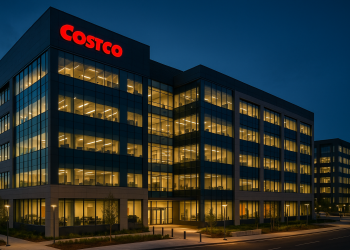No products in the cart.
Reliance Jio Clears Major Hurdle in Satellite Internet Rollout for India: Bridging the Global Digital Divide
Reliance Jio Platforms is set to revolutionize internet connectivity in India with the launch of JioSpaceFiber. By securing key IN-SPACe approvals, Jio plans to deliver high-speed satellite internet to remote and rural areas, promoting digital inclusivity and supporting the Digital India initiative.
Reliance Jio Platforms is on the brink of revolutionizing internet connectivity in India with the launch of its satellite-based broadband service, JioSpaceFiber. This development comes after the telecom giant secured crucial approvals from the Indian National Space Promotion and Authorisation Centre (IN-SPACe), paving the way for its ambitious satellite internet project. This move not only signifies a major leap for India but also aligns with global trends in satellite internet, which are transforming connectivity worldwide.
The Promise of Satellite Internet
Satellite internet uses a network of satellites orbiting the Earth to provide internet services to regions where traditional broadband infrastructure is lacking or unavailable. This technology can deliver high-speed internet to remote and rural areas, ships at sea, and even airplanes, ensuring global coverage. Key players in the satellite internet space include SpaceX’s Starlink, Amazon’s Project Kuiper, OneWeb, and now, Reliance Jio’s JioSpaceFiber.
Global Context and Major Players
 Automotive Industry
Automotive IndustrySunil Moolchandani Takes the Helm as National Sales Head at Hyundai Motor India
Sunil Moolchandani has been appointed National Sales Head at Hyundai Motor India, indicating a strategic shift in the company's sales…
The Promise of Satellite Internet Satellite internet uses a network of satellites orbiting the Earth to provide internet services to regions where traditional broadband infrastructure is lacking or unavailable.
- Starlink by SpaceX: One of the most well-known satellite internet providers, Starlink aims to deploy a constellation of thousands of small satellites in low Earth orbit (LEO). With over 1,500 satellites already in orbit, Starlink offers services in various countries, providing high-speed internet to rural and underserved regions.
- OneWeb: Backed by the UK government and Bharti Enterprises, OneWeb is another major player. It aims to provide global satellite broadband services, especially focusing on connecting remote areas. With significant investments and ongoing satellite launches, OneWeb is poised to be a formidable competitor.
- Amazon’s Project Kuiper: Amazon’s ambitious plan to launch over 3,000 satellites to provide global broadband services is still in the developmental phase. However, it has received significant regulatory approvals and aims to start launching satellites soon.
Satellite Internet in India: A Game Changer
India, with its vast and diverse geography, presents unique challenges for internet connectivity. Despite significant advancements in urban areas, many rural and remote regions still lack reliable internet access. Satellite internet can bridge this gap, offering high-speed connectivity to every corner of the country.
Reliance Jio’s JioSpaceFiber
Reliance Jio’s entry into the satellite internet market with JioSpaceFiber marks a significant milestone for India. Here’s a closer look at what this means:
 Artificial Intelligence
Artificial IntelligenceNavigating the Ethical Labyrinth of AI in Defense
As AI technology transforms defense strategies, ethical dilemmas emerge, challenging future strategists and their careers. Explore the implications.
Read More →- Strategic Partnerships: Reliance Jio has partnered with Luxembourg-based SES, leveraging its O3b and O3b mPOWER satellites to provide medium Earth orbit (MEO) satellite connectivity. This partnership aims to deliver gigabit-level speeds and low-latency internet across India.
- Regulatory Approvals: Securing approvals from IN-SPACe is crucial for Jio to deploy its satellite internet services. This includes obtaining landing rights and market access authorizations, which are necessary for deploying global satellite bandwidth capacity within India.
- Coverage and Impact: JioSpaceFiber is designed to provide high-speed internet to underserved and rural areas, aligning with the Indian government’s Digital India initiative. This will enhance access to education, healthcare, and governmental services online, promoting digital inclusivity.
Challenges and Future Prospects
While the potential of satellite internet is immense, there are challenges to overcome. These include regulatory hurdles, the high cost of satellite deployment, and ensuring affordable service pricing for end-users. Additionally, competition among global players is fierce, with each vying for a share of the growing market.
However, the future looks promising. Advances in satellite technology, increased investment, and supportive regulatory frameworks are likely to drive growth in this sector. For India, the launch of JioSpaceFiber could be a transformative step towards achieving universal digital connectivity, setting a precedent for other emerging markets.











